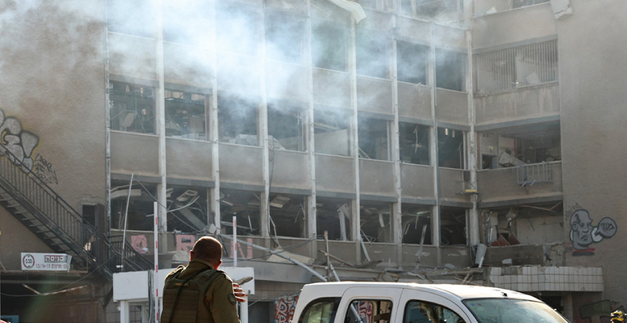The diplomatic landscape of the conflict between Tel Aviv and Tehran underwent a significant shift a week ago, putting an end to over four decades marked by tensions, threats, and occasional strikes from both sides. Never before had Israel and Iran engaged directly within each other’s core territories.
Protothema.gr is currently reporting from Israel, capturing the effects of this escalating confrontation with Iran, its long-standing adversary.
In Haifa, Israel’s northernmost port, one could hardly guess that just meters away, Tehran has managed to penetrate the Iron Dome and strike crucial targets within Israel.
Following Israel’s initial strike on the Iranian border and Tehran’s retaliation involving three missile barrages, Haifa has experienced three significant attacks on critical infrastructure in just a week.
Despite enduring a barrage of medium- and long-range missiles and lacking direct British and American air support, Israel manages to intercept over 90% of incoming projectiles. However, that remaining 10% creates a scenario that citizens are unaccustomed to.
In just a week, Haifa has been struck three times, affecting both industrial and residential areas — a clear sign that no location is immune, successfully conveyed by Iran to Tel Aviv. Several individuals have been injured, some critically.
This is particularly noteworthy because, aside from its world-class air defenses, Israelis are among the most well-trained when it comes to swiftly and systematically seeking refuge in fully equipped shelters, irrespective of the time or stress involved.
The port, northern refineries, and military sites—located just hundreds of meters from a cruise ship terminal bustling with traffic until 2023—have all been targeted by Iranian missile strikes on three distinct occasions.
The destruction observed is significant and starkly contrasts the rockets used by Hezbollah from Lebanon just a year prior. Buildings located several hundred meters from the main impact zone at Haifa’s port have lost all windows, and debris from ballistic missile impacts has spread over a 700-meter radius, turning vehicles into mangled wrecks.
The message Iran is sending to Israel—as perceived by residents of both Haifa and Tel Aviv—differs markedly from Israel’s communication to Tehran. This is evident in the deserted streets, minimal foot traffic, and the few shops daring to remain open amid the ongoing situation in Israel’s urban areas.
Sources from Protothema.gr indicate a significant portion of Tel Aviv’s residents have fled the city, heading towards the border and rural areas, signaling that the notion of “absolute security,” which held strong until late October 2023, no longer feels valid.
Despite Iran’s precise and targeted strikes, the reality remains that it has a limited ability to cause damage compared to what it suffers from the over 200 Israeli fighter jets dominating its airspace.
Pentagon sources have lightheartedly commented that “today, Israeli pilots receive better pay with less risk, as missions over Tehran are seen as dangerous only in theory.”
Should the U.S. engage in support of Israel’s operations, the concern will no longer be if the theocratic regime in Tehran can be defeated, but rather how many hours—rather than days—it will take before the Supreme Leader seeks a return to negotiations.
No matter how many strikes Iran launches until that point, they will serve primarily as symbolic gestures, never reaching Israel’s strategic thresholds. They will stand as reminders that no one is truly invulnerable, but they will ultimately fall short of corroborating the Iranian theocratic narrative.
Ask me anything
Explore related questions

















